Archive for the ‘Threats from Greenwashing’ Category
Monday, March 31st, 2014
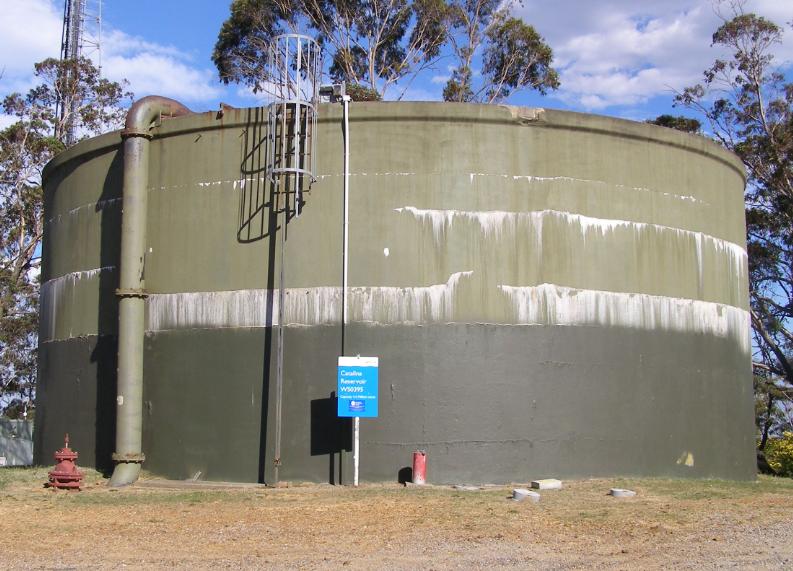 Sydney Water reservoir half-painted
Narrow Neck Road, Katoomba
[Photo by Editor, 20131213, Photo © under ^Creative Commons] Sydney Water reservoir half-painted
Narrow Neck Road, Katoomba
[Photo by Editor, 20131213, Photo © under ^Creative Commons]
This water reservoir tank is one of two on the ridgetop at Narrow Neck Road, Katoomba (Central Blue Mountains, New South Wales) which supplies drinking water to the immediate and surrounding residents of Katoomba.
Previously, in May 2013 we took a photo of both tanks showing the white chlorine salt efflorescence stains and we published an article later in August that year. Why then should someone wish to paint over the stains with green paint? Do they think it will make the water cleaner and more appealing to be drunk?
In our previous article on this topic we asked: “Are we to now expect fresh green paint over the chlorine salt efflorescent tanks to hide the problem?” It seems Sydney Water has done just that. Who else would spend their own money to paint over a government water tank? Why is it that Sydney Water’s water quality analysis measured at the upstream Cascade Reservoir and not from these tanks before it flows to residents?
This is the analysis:
[Source: ‘Typical drinking water analysis’, Cascade Water Supply System, Sydney Water, undated (so supposedly indicative), ^http://www.sydneywater.com.au/web/groups/publicwebcontent/documents/document/zgrf/mdq0/~edisp/dd_044721.pdf]
This is the same tank previously in May 2013:
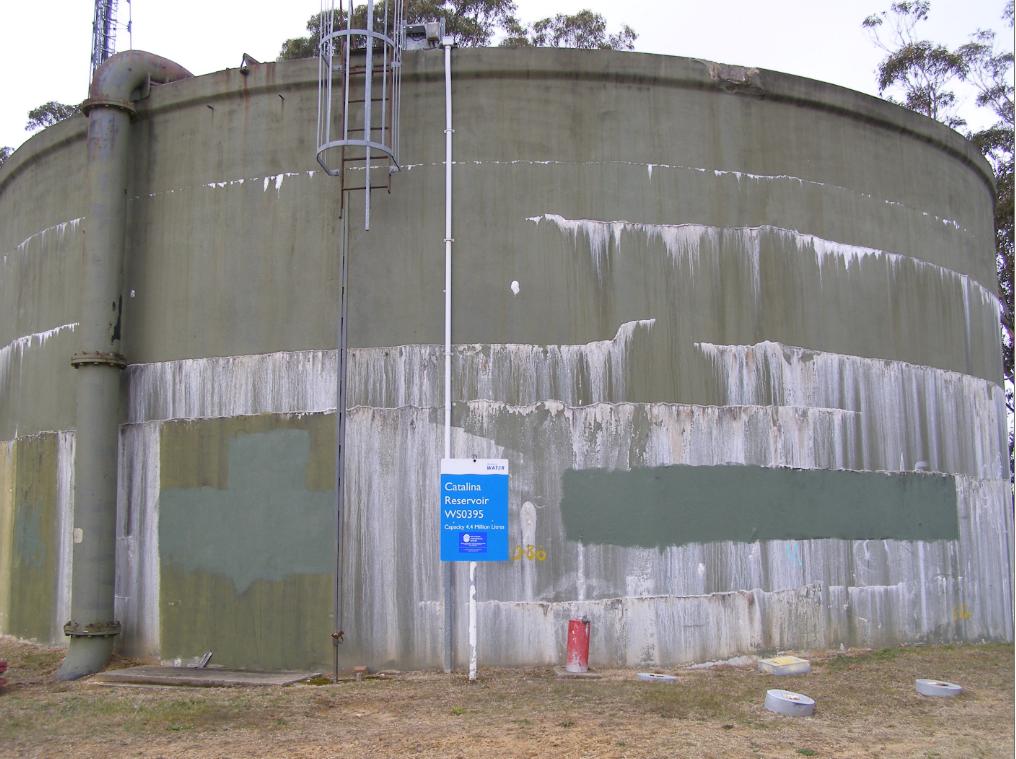 Blue Mountains drinking water tank with chlorine salt stains
Mineral salt efflorescence
Narrow Neck Road, Katoomba
[Photo by Editor, 20130507, Photo © under ^Creative Commons] Blue Mountains drinking water tank with chlorine salt stains
Mineral salt efflorescence
Narrow Neck Road, Katoomba
[Photo by Editor, 20130507, Photo © under ^Creative Commons]
.
This is our previous article:
.
.
Thursday, September 26th, 2013
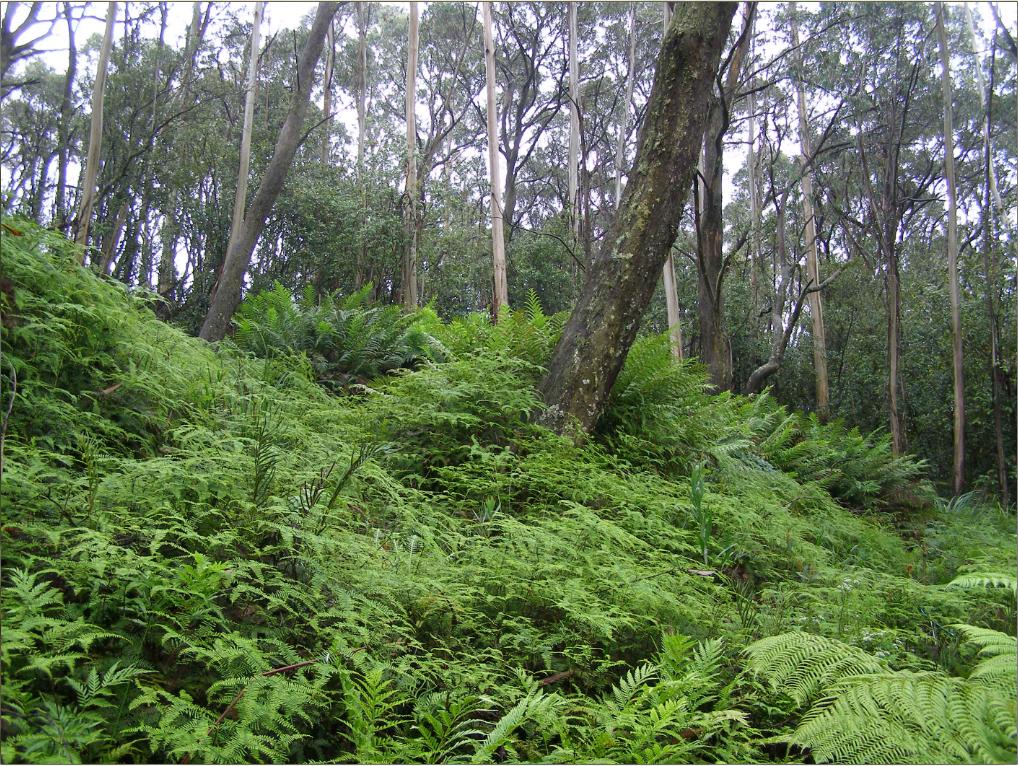 This is a Blue Mountains Swamp
It is a surviving remnant of Blue Mountains Swamps in the Sydney Basin Bioregion ecological community, which in 2005 were listed as Endangered by the Commonweath Threatened Species Scientific Committee.
[Photo by Editor 20120128, photo © under ^Creative Commons]
Click image to enlarge This is a Blue Mountains Swamp
It is a surviving remnant of Blue Mountains Swamps in the Sydney Basin Bioregion ecological community, which in 2005 were listed as Endangered by the Commonweath Threatened Species Scientific Committee.
[Photo by Editor 20120128, photo © under ^Creative Commons]
Click image to enlarge
.
Blue Mountains Swamps?
.
Blue Mountains Swamps are globally restricted to the Central (and upper) Blue Mountains and to Newnes Plateau at altitudes between 600 m to 1200 m AMSL. They exist on peat soils above a sandstone substrate geomorphology. The soil tends to be water logged due to the presence of constant groundwater seeping over the impermeable claystone layers in the sandstone which impedes their drainage, however some swamps can be constantly flooded or else ephemeral, varying with seasonal rainfall patterns and more long term with El Niño/La Niña climatic phases.
Blue Mountains Swamps are typically situated at the headwaters of watercourses below ridges, but can also be hanging swamps on steep ridges, or valley bottom swamps. The structure and species composition of Blue Mountains Swamps varies with localised geology, topographic location, depth of the water table, extent and duration of water logging, drainage gradients, sedimentation and soil type.
Blue Mountains Swamp vegetation structure can range from being open or closed variants of sedgeland, rushland, heath, tussock grassland, tussock grassland, tall grassland, scrub and tall shrubland. The vegetation is typically under 3 metres in height, although taller shrubs may be present. Emergent tree species favouring wet root systems can occur on the swamp margins, and the vegetation here tends to be closed woodland in their undisturbed natural state.
Both the structure and species composition of swamp vegetation vary from site to site, and the individual species and structural types shown below do not all occur at every site. Within a single swamp area a complex mosaic of vegetation types (structure and species composition) may be present.
The structure of Temperate Highland Peat Swamps on Sandstone vegetation includes sedgeland, closed sedgeland, open-rushland, open-heath, closed-heath, tussock grassland, closed-tussock grassland, tall closed-grassland, open-scrub and tall shrubland. The vegetation is usually less than 3 m in height, although taller shrubs may be present. Emergent trees may occur on swamp margins, and the vegetation here tends to open woodland.
Typical vegetation is characterised by the presence of sedges, graminoids (grass-like plants) and forbs (herbaceous non-grass or grass-like plants) with or without shrubs. They are endemic to the upper Blue Mountains, comprising numerous small patches which aggregate to being about 3,000 heactares in total area. They occur naturally nowhere else on the planet.
Blue Mountains Swamps are scientifically included as a class within the nationally recognised Temperate Highland Peat Swamps on Sandstone ecological community. On 29th April 2005, Temperate Highland Peat Swamps on Sandstone was included in the list of nationally threatened ecological communities under section 181 of Australia’s Environment Protection and Biodiversity Conservation Act 1999. [Source: ^http://www.comlaw.gov.au/Details/F2005L01134]. This was mainly due to Threatened Species Scientific Committee recognising its limited distribution and vulnerability to ongoing threats.
It followed a ten year campaign by Blue Mountains environmentalists..
.
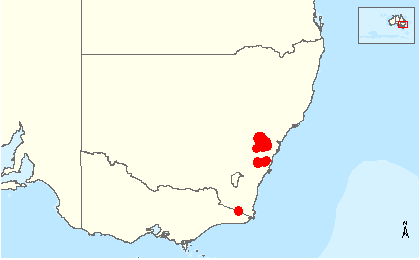 Global distribution map of Temperate Highland Peat Swamps on Sandstone ecological community.
[Source: Temperate Highland Peat Swamps on Sandstone, Biodiversity, Species Profile and Threats Database, Department of the Environment, Australian Government, ^http://www.environment.gov.au/cgi-bin/sprat/public/publicshowcommunity.pl?id=32#status] Global distribution map of Temperate Highland Peat Swamps on Sandstone ecological community.
[Source: Temperate Highland Peat Swamps on Sandstone, Biodiversity, Species Profile and Threats Database, Department of the Environment, Australian Government, ^http://www.environment.gov.au/cgi-bin/sprat/public/publicshowcommunity.pl?id=32#status]
.
Twynam Swamp
.
Twynam Swamp is essentially an upland Blue Mountains Sedge Swamp dominated by coral fern (Gleichenia dicarpa).
It is situated on a hillside at the headwaters of Katoomba Creek in the heart of the distribution area for Temperate Highland Peat Swamps on Sandstone. The swamp here is predominantly a sedge swamp and is permanently water logged, probably due to the localised presence of natural groundwater springs.
This particular upland swamp area features a diverse ecological community including the following indicator swamp flora species:
.
-
Coral Fern (Gleichenia dicarpa),
-
King Fern (Todea barbara)
-
Tasman Flax-lily (Dianella tasmanica)
-
Soft Twig Rush (Baumea rubiginosa)
-
Fork-leaved sundew (Drosera binata)
-
Red-fruit Saw Sedge (Gahnia sieberiana)
-
Alpine Heath (Epacris paludosa)
-
Spreading Rope Rush (Empodisma minus)
-
Mat Rush (Lomandra longifolia)
-
Peat Moss (Sphagnum cristatum) in the ground layer
.
and a range of Hakea and Grevillea shrub species.
.
Characteristic of this upper Blue Mountains ridgeline landscape, above this swamp margin stands emerging Eucalyptus oreades, endemically rare in their own right.
Twynam Swamp is but one of the Blue Mountains Swamps localised fragile ecosystems coming under increased pressure mainly by deforestation for housing development and by frequent bushfires especailly from broadscale hazard reduction regimes. Both practices are not only facilitated by government, but sanctioned and enshrined in legislation, despite being scientifically recognised as key threatened processes.
.
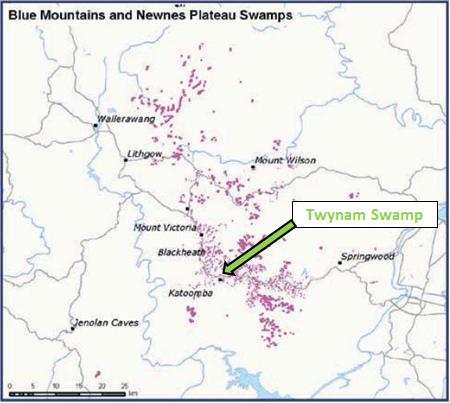 Larger scale distribution map of Blue Mountains and Newnes Plateau Swamps
[Source: ‘Nationally threatened species and ecological communities’, Department of the Environment, Australian Government,
^http://www.environment.gov.au/biodiversity/threatened/publications/pubs/temperate-highland-peat-swamps.pdf] Larger scale distribution map of Blue Mountains and Newnes Plateau Swamps
[Source: ‘Nationally threatened species and ecological communities’, Department of the Environment, Australian Government,
^http://www.environment.gov.au/biodiversity/threatened/publications/pubs/temperate-highland-peat-swamps.pdf]
.
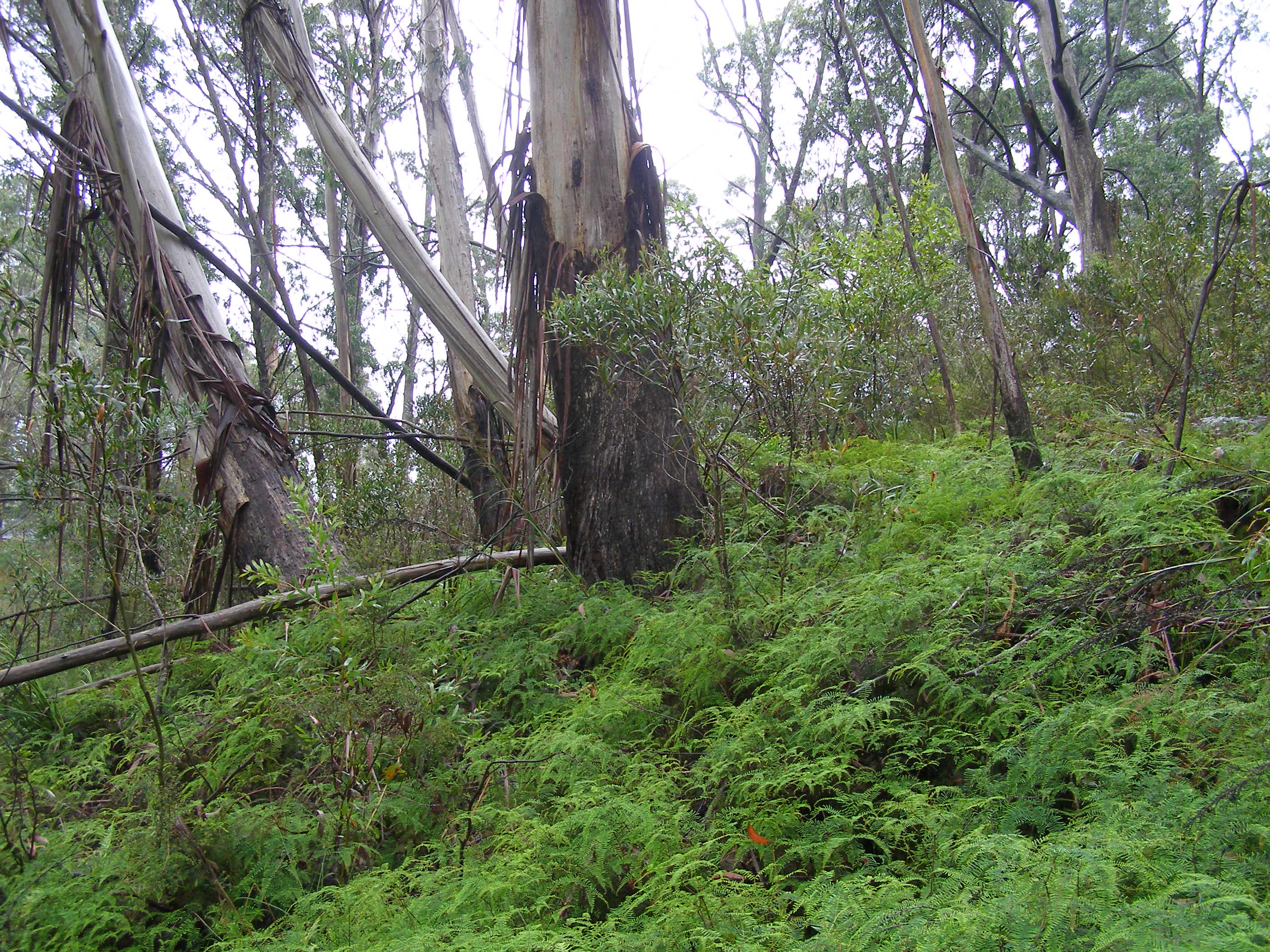 This Blue Mountains Swamp also contains a rare significant stand of Eucalyptus oreades (Blue Mountains Ash) around its periphery, which in itself holds rare ecological value.
[Photo by Editor 20120128, photo © under ^Creative Commons]
Click image to enlarge This Blue Mountains Swamp also contains a rare significant stand of Eucalyptus oreades (Blue Mountains Ash) around its periphery, which in itself holds rare ecological value.
[Photo by Editor 20120128, photo © under ^Creative Commons]
Click image to enlarge
.
But try telling this to the local Blue Mountains Council. Council has just approved the bulldozing through and above this endangered and protected swamp for housing development.
Council’s zoning under its own Local Environment Plan of 1991 actually recognises this particular swamp as being environmentally protected. The swamp covers much of the Katoomba Creek headwaters site that has just been approved for housing development at the end of Twynam Street. It practically adjoins a restricted Sydney Water Catchment area on the ridgetop.
This site is a swamp. It has no connected water, power, gas or telephone. It has no stormwater connection. It is a swamp.
Not surprisingly, the developer’s Flora and Fauna Assessment has concluded that the bulldozing of the swamp will “unlikely.. (cause) any significant impact on any endangered ecological community, population or any threatened species and as such a Species Impact Statement.” [Source: Anderson Environmental Consultants, May 2012, for 121 Twynam Street, p. 13]
So Blue Mountains Council’s Senior Environmental Health and Building Surveyor, Daniel Roberts, approved construction two weeks ago (12th September 2013) for a two storey dwelling and driveway to carve through this Blue Mountains Swamp. The consent conditions for this development application (X/673/2012) read as if the site was just an urban block of land in downtown Sydney; nothing special.
Rules for some?
Still council’s wholesome vision advocates “respecting our heritage and safeguarding our fragile environment” – a clear disconnect between propaganda and practice.
.
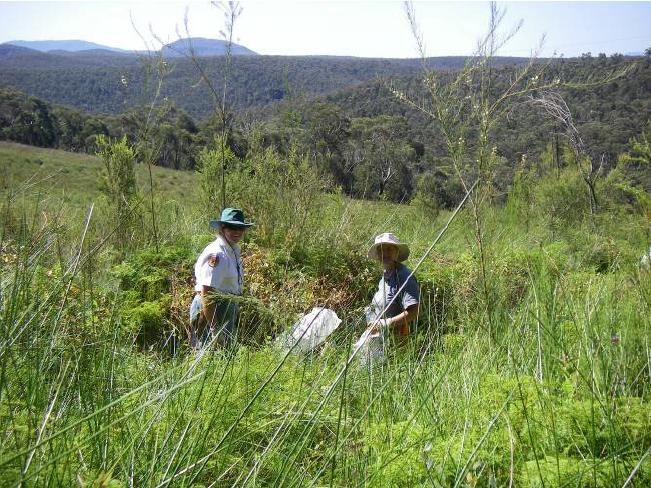 Blue Mountains Swampcare at Kittyhawke Swamp, Wentworth Falls.
Similar swamp characteristics, just more convenient location for Council and Parks Service to jointly show they care.
[Source: Blue Mountains Council’s Upland Swamp Rehabilitation Programme (2007) enticing community volunteers.] Blue Mountains Swampcare at Kittyhawke Swamp, Wentworth Falls.
Similar swamp characteristics, just more convenient location for Council and Parks Service to jointly show they care.
[Source: Blue Mountains Council’s Upland Swamp Rehabilitation Programme (2007) enticing community volunteers.]
.
Ed: To Blue Mountains Council development staff, ‘Temperate Highland Peat Swamps on Sandstone’ national legislation is a discretionary matter depending upon where the swamp happens to be situated.
.
Blue Mountains Council is content to be hypocritical about its stance on protecting Blue Mountains Swamps under its Swampcare Programme, while at the same time its development planning staff authorise destruction of these swamps. It is in flagrant breach of national legislation.
Fortunately, there remain many in the local Blue Mountains community who place high value and have due respect for Blue Mountains Swamps and their need for consistent protection under the national legislation, irrespective of where the swamps happen to be situated. Next door resident, Francis Scarano, has repeatedly objected to the Blue Mountains Council about this development’s certain destructive impact upon the swamp:
.
“The swamp out the front will die along with the E. Oreades as they are not able to cope with excavation for the drive way across roots and concrete next to them and the swamp cannot cope with cut ground water supplies.
What happens when you build above a swamp? You kill a swamp even if you do not build on it. Development above is more than enough to do the job. Winding roads around Eucalyptus oreades grove and building turning bays is enough to make the trees in groves to fall down. Even though the developer is not clearing the oreades grove or swamp his actions will kill them all the same but more slowly.
The swamp particularily depends on the hydrology ie underground springs being undisturbed. They do not understand that building above a swamp will kill it anyway.”
.
Her concerns have fallen on deaf, ignorant ears at Blue Mountains Council.
But council ignorance has not stopped local residents making a stand to save this precious remnant swamp.
.
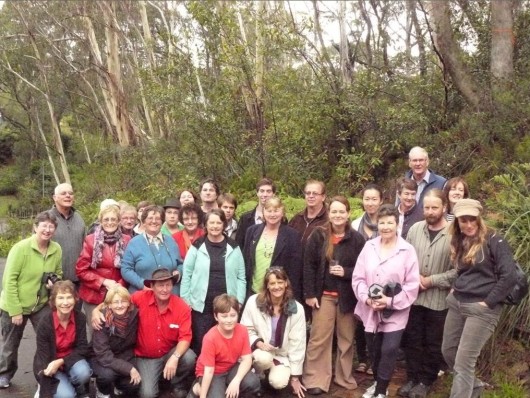 Friends of Twynam Swamp
A collective of friends of Francis Scarano who stand in solidarity with Frances Scarano
to save Twynam Swamp (behind) from the developer’s bulldozer.
[© Photo by Francis Scarano, 20130327] Friends of Twynam Swamp
A collective of friends of Francis Scarano who stand in solidarity with Frances Scarano
to save Twynam Swamp (behind) from the developer’s bulldozer.
[© Photo by Francis Scarano, 20130327]
.
Tags: Alpine Heath, Baumea rubiginosa, Blue Mountains Swampcare, Blue Mountains Swamps, Coral Fern, Dianella tasmanica, Drosera binata, Empodisma minus, Epacris paludosa, Fork-leaved sundew, Gahnia sieberiana, Gleichenia dicarpa, indicator swamp flora species, King Fern, Lomandra longifolia, Mat Rush, Peat Moss, Red-fruit Saw Sedge, Soft Twig Rush, Sphagnum cristatum, Spreading Rope Rush, Tasman Flax-lily, Temperate Highland Peat Swamps on Sandstone, Todea barbara, Twynam Swamp
Posted in Blue Mountains (AU), Threats from Development, Threats from Greenwashing, Threats from Weak Environmental Laws | No Comments »
Add this post to Del.icio.us - Digg
Thursday, August 1st, 2013
 Blue Mountains drinking water tank with chlorine salt stains Blue Mountains drinking water tank with chlorine salt stains
Mineral salt efflorescence
Narrow Neck Road, Katoomba
[Photo by Editor, 20130507, Photo © under ^Creative Commons]
.
Rainwater, streams, surface water, ground water, aquifers and Australia’s Great Artesian Basin are all interconnected hydrology across Eastern Australia.
In the Blue Mountains plateau country, west of Sydney, sandstone-ironstone geology creates a subterrainean barrier to rainwater absorption and so the ground water slowly flows horizontally over longer periods. This sustains upland swamps and wetland ecosystems.
Human built settlement across the central Blue Mountains ridgeland since the 1820s introduced sewage contamination into the downstream watercourses, gullies and gorge country below. The raw sewage drainage piping into the valleys below the townships has recently been diverted expensively to contained closed system sewage infrastructure. But urban runoff and dodgy stormwater overflows into legacy sewage mains cause ongoing leakages into the water catchments of the Blue Mountains.
Savvy local bushwalkers know not to drink the water from watercourses downstream of Blackheath, Springwood, Katoomba and other such townships.
Prudent government authority, Sydney Water, disinfects its drinking water reservoirs in the Blue Mountains, to be safe.
But some of the Blue Mountains water that falls as rain in a largely wilderness region, is captured as drinking water in a few reservoirs, then pumped by larged pipes up to large water tanks above the Blue Mountains townships to enable gravity to deliver pressurised water to thousands of homes.
.
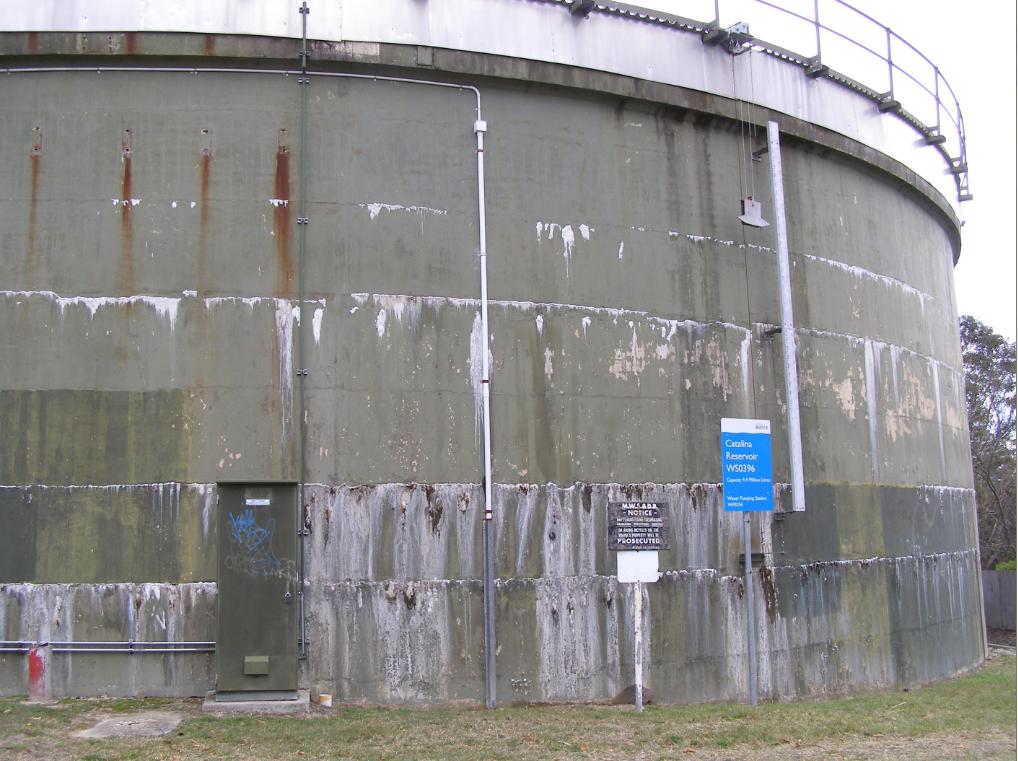 Second Blue Mountains drinking water tank with chlorine salt stains
Second Blue Mountains drinking water tank with chlorine salt stains
Narrow Neck Road, Katoomba
[Photo by Editor, 20130507, Photo © under ^Creative Commons]
.
Ed: Are we to now expect fresh green paint over the chlorine salt efflorescent tanks to hide the problem?
.
.
Chloramine Tap Water
.
Across New South Wales, Sydney Water routinely disinfects drinking water in its reservoirs to control the risk of prevalent and toxic E. coli, Cryptosporidium and Giardia bacteria contamination.
Sydney Water applies a derivative of chlorine known as chloramine in its reservoirs – a disinfectant formed by mixing chlorine with ammonia. This is less toxic than the hypochlorous acid typically applied to swimming pools. Given the history in the Blue Mountains of sewage and runoff downstream from upstream townships, Sydney Water ups the dosage of chloramine, to be sure.
Chloramine is a less effective disinfectant than the hypochlorous acid, but it is longer lasting and stays in the water system as it moves through the pipes that transport it to consumers (a process that can take three or four days). For this reason, chloramine is often used alongside chlorine as a “secondary” disinfectant designed to remain in drinking water longer. But what are the long term impacts of drinking Chloramine contained in drinking water. What long term scientific studies have been done and publicly reported?
Chlorine by itself is a very dangerous material. Liquid chlorine burns the skin and gaseous chlorine irritates the mucus membranes. Concentrations of the gas as low as 3.5 parts per million can be detected by smell while concentrations of 1000 parts per million can be fatal after a few deep breaths.
In the Blue Mountains, the tap water is decidedly hardened in taste by the chlorine additive. So should tap water in the Blue Mountains be drunk safely?
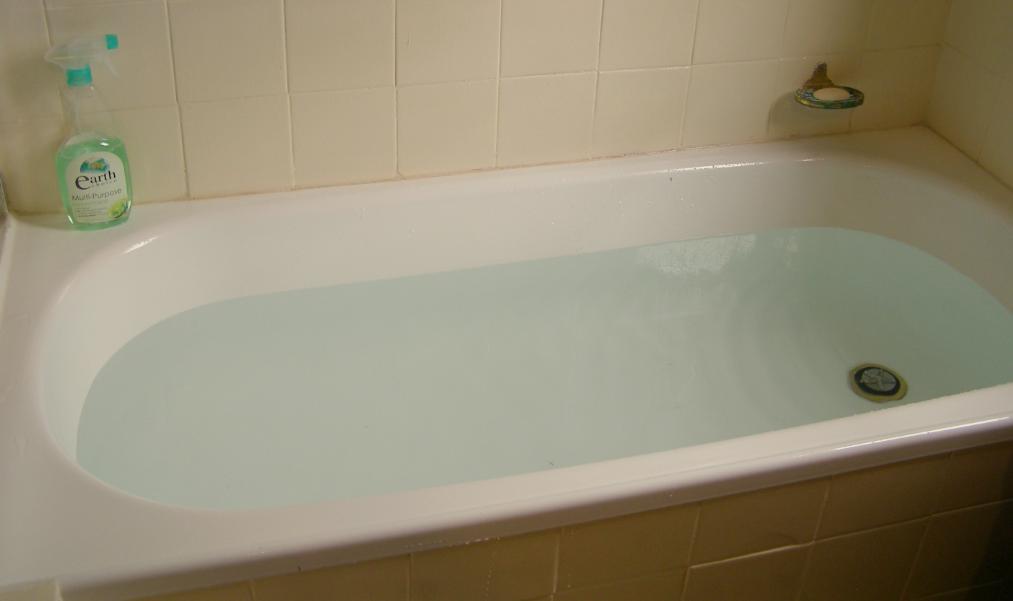 Blue Mountains bath with a distinctive chlorine aqua tinge
[Photo by Editor, 20130502, Photo © under ^Creative Commons] Blue Mountains bath with a distinctive chlorine aqua tinge
[Photo by Editor, 20130502, Photo © under ^Creative Commons]
So is the Blue Mountains tap water safe to drink?
.
Wednesday, July 24th, 2013
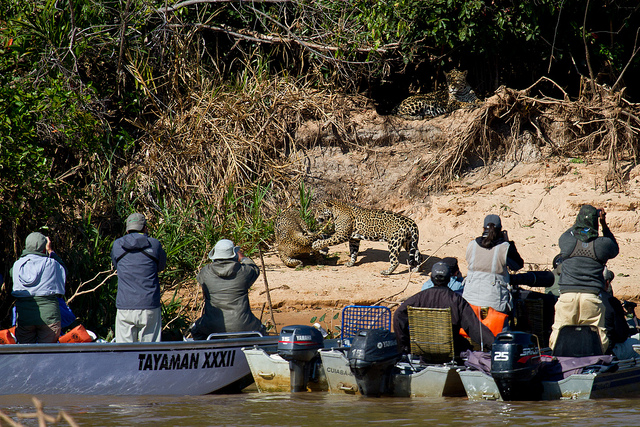 Jaguars fight – set up to entertain “ecotourists”
‘Reality Zoos’ ?
[Source: ^http://www.ironammonite.com/2011/11/ecotourism-or-ecoterrorism-big-cats.html] Jaguars fight – set up to entertain “ecotourists”
‘Reality Zoos’ ?
[Source: ^http://www.ironammonite.com/2011/11/ecotourism-or-ecoterrorism-big-cats.html]
.
In 1999, Canadian David A. Fennell, PhD, based at Brock University in Ontario in the Department of Recreation and Leisure Studies wrote a poignant text about the ‘ecotourism’ phenomenon. We recommend its read, now in its third edition from 2007. We extract a small portion from the second edition as an article below.
[Text: ‘Ecotourism: an introduction’, 2003, 3e, book by David A. Fennell, published by Routledge (imprint of Taylor and Francis Group), New York, America, ISBN 0-415-30365-6, Dewey Code: 338.4791-dc21]
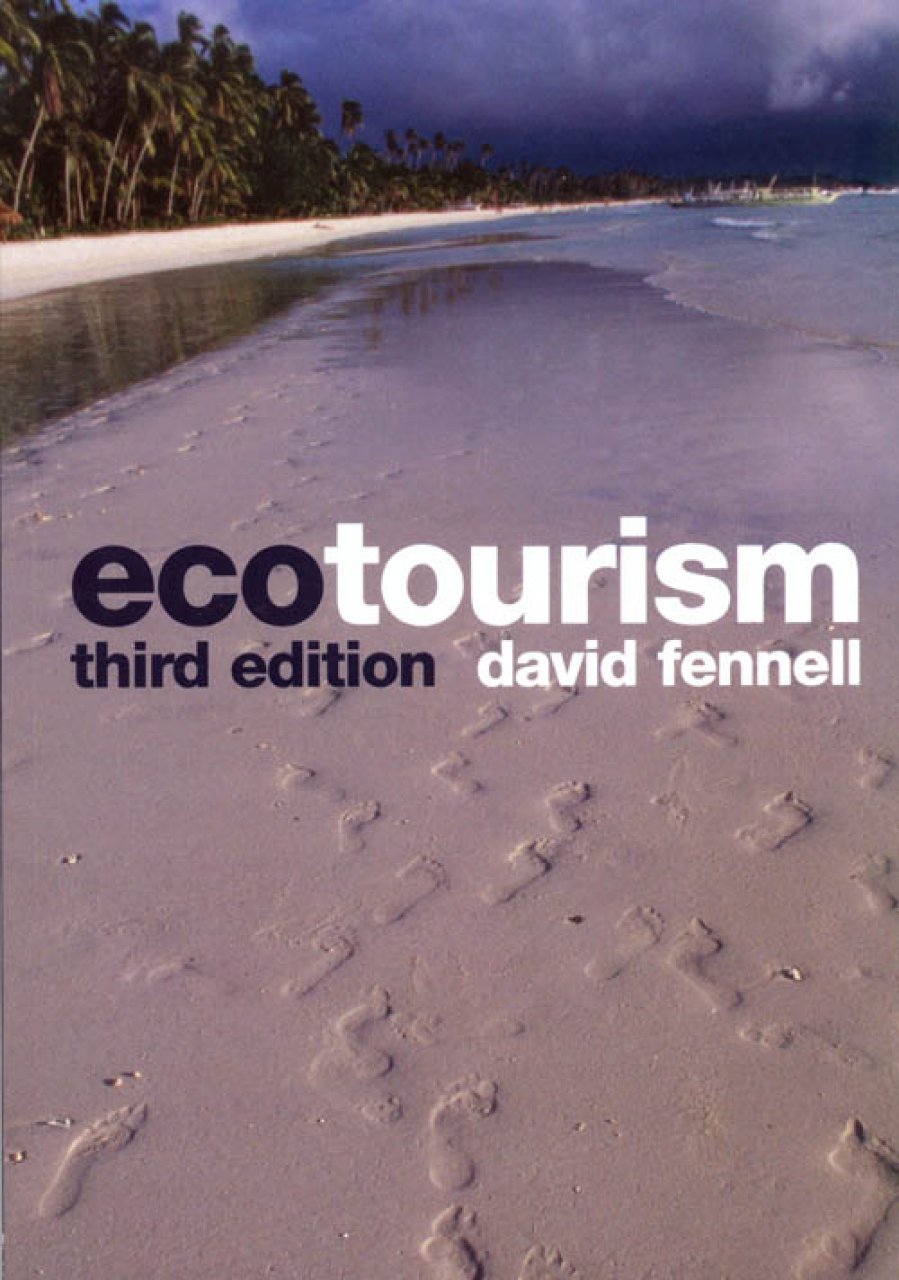 Third Edition (2007)
^http://www.nhbs.com/ecotourism_tefno_87800.html Third Edition (2007)
^http://www.nhbs.com/ecotourism_tefno_87800.html
.
<< As arguably the largest and fastest growing industry, the potential impacts of tourism are considerable.
Devised by social and natural scientists, ‘ecotourism‘ can be an effective way to safeguard local communities and prevent the destruction of the natural world.
Responding to increased interest and global competition, the tourist industry has not been slow to appropriate the term to describe a host of different experiences, maredly different from its origins. (Fennell identifies) “inconsistencies in the philosophical basis of ecotourism, and the development and implementation of ecotourism products in a variety of destinations.
For example, in a sobering account of her travel experience in the Peruvian rainforest, Arlen (1995) writes that ecotourism has reached a critical juncture in its evolution. She speaks graphically of instances where tourists endured swimming in water with human waste; guides capturing Sloths and Caiman for tourists to photograph; raw sewage openly dumped into the ocean; mother Cheetahs killing their cubs to avoid the harassment of Cheetah-chasing tourists; and an ecotourism industry under-regulated with little hope for enforcement.
Similar experiences have been recorded by other writers including Farquharson (1992), who argues that ecotourism is a dream that has been severely diluted. She writes that whereas birding once prevailed, ecotourism has fallen into the clutches of many of the mega-resorts like Cancún: the word (ecotourism) changes colour like a chameleon.
.
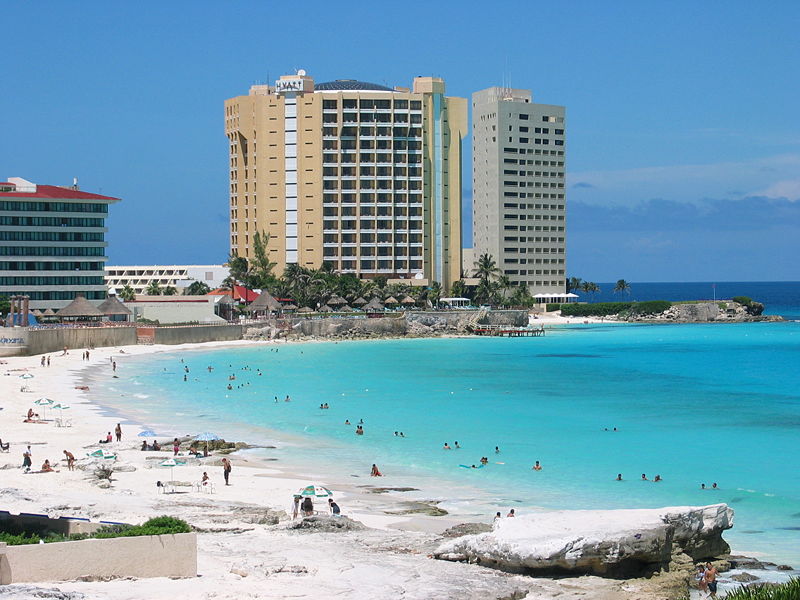 Cancún Over-tourism
.
Cancún Over-tourism
.
What began as a concept designed by ecologists to actively prevent the destruction of the environment has become a marketing term for tourism developers who want to publicise clean beaches, fish-filled seas and a bit of culture for when the sun begins to hurt (Farquharson (1992: 8).
.
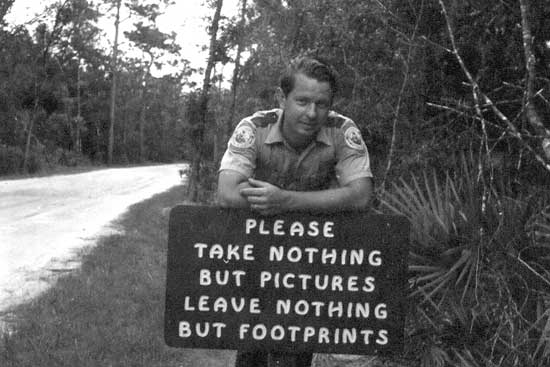 Florida State Park Ranger Randy Brown Florida State Park Ranger Randy Brown
.
These scenarios appear to be worlds apart from the evolution of ecotourism in the not too distant past, where, as outlined by Farquharson, it was seen as a haven for birdwatchers and scientists alike.
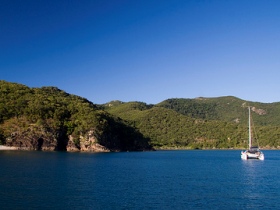 Whitsundays – original Whitsundays – original
(North Queensland)
.
Clearly, ecotourism is a thriving economic enterprise in both developed and the less developed countries around the world. However, while scientists occupy one end of the ecotourism continuum, in other cases this form of tourism has come to represent a completely different type of experience, with the industry clamouring to take advantage of a larger softer market of ecotourists, as a result of increased interest and competition.
.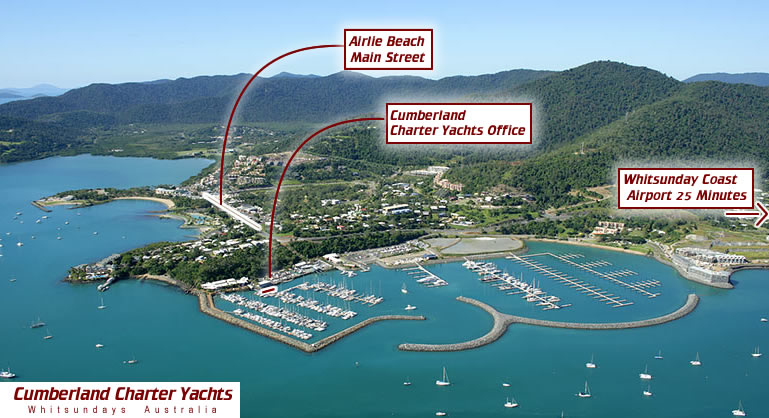 Whitsundays – since exploited Whitsundays – since exploited
.
According to some (Budowski in Arlen, 1995) ecotravellers at this softer end of the continuum have learned to expect a type of experience much like what one might get in Hawaii or Cancún. The industry involvement is just one of the many facets of the ecotourism industry discussed in (Fennell’s) book. Others include government involvement in ecotourism, aboriginal interests, partnership and training, tourism demand, structural differences between developed and developing countries, policy and regulation, ethics and responsibility, and so on. >> (extracted from Fennells’ Preface)
.
Lessons from 20th Century Mass Tourism
.
<<..Tourism has been both lauded and denounced for its ability to develop and therefore transform regions into completely different settings. In the former case, tourism is seen to have provided the impetus for appropriate long-term development; in the latter the ecological and sociological disturbance to transform regions can be overwhelming. While most of the documented cases of the negative impacts of tourism are in the developing world, the developed world is certainly not an exception.
Young (1983), for example, documented the transformation of a small fishing farming community in Malta by graphically illustrating the extent to which tourism development – through an increasingly complex system of transportation, resort development, and social behaviour – overwhelms such areas over time.
These days we are more prone to vilify or characterise conventional mass tourism as a beast, a monstrosity which has few redeeming qualities for the destination region, their people and their natural resource base.
Consequently, mass tourism has been criticised for the fact that it dominates tourism within a region owing to its non-local orientation, and the fact that verry little money is spent within the destination actually stays and generates more income.
It is quite often the hotel or mega-resort that is the symbol of mass tourism’s domination of a region, which are often created using non-local products, have little requirement for local food products, and are owned by metropolitan interests. Hotel marketing occurs on the basis of high volume, attracting as many people as possible, often over seasonal periods of time. The implications of this seasonality are such that local people are at times moved in and out of paid positions that are based solely on this volume of tourist traffic. Development exists as a means by which to concentrate people in very high densities, displacing local people from traditional subsistence-style livelihoods (as outlined by Young 1983) to ones that are subservience based.
Finally, the attractions that lie in and around these massive developments are created and transformed to meet the expectations and demands of visitors.
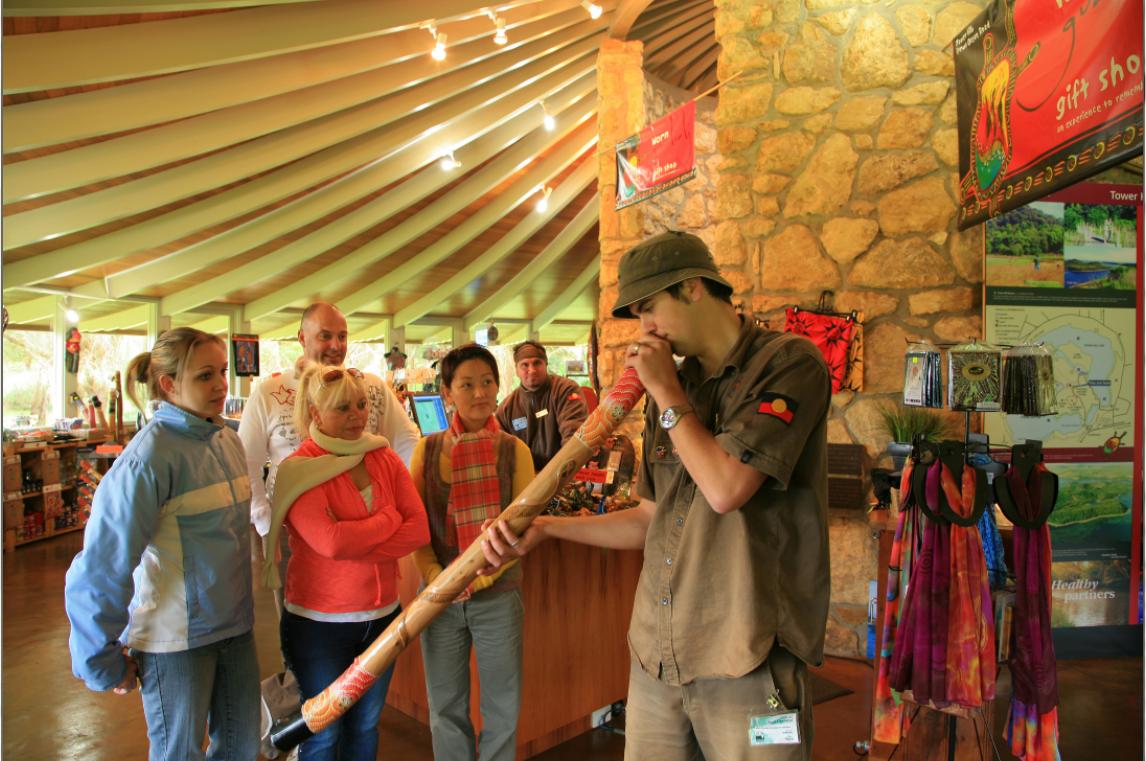
Emphasis is often on commercialisation of natural and cultural resources, and the result is a contrived and inauthentic representation of, for example, a cultural theme or event that has been eroded into a distant memory. >> (extracted Fennell’s page 4)
.
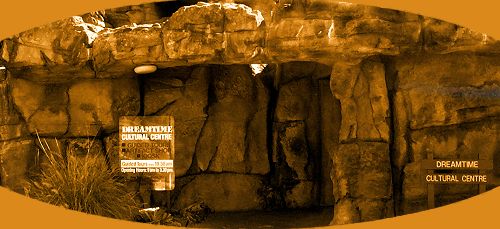 . .
Further Reading:
.
[1] ‘The Changing World of Bali Religion Society and Tourism’ , 2005, by Leo Howe, published by Routledge, Britain, ^http://antropologias.descentro.org/files/downloads/2012/03/The_Changing_World_of_Bali__Religion__Society_and_Tourism.pdf
.
[2] ‘Is ecotourism good for the environment and world?’, 2010, Campbell College, Belfast, Northern Ireland, ^http://www.campbellcollege.co.uk/academic/departments/geography/Documents/ecotourism.pdf
.
[3] ‘ The Place of Ecotourism, with particular reference to Australia’, 2001, by Associate Professor Robyn Bushell, Head of Tourism Studies, School of Environmental & Agriculture
University of Western Sydney, Australia, ^http://hsc.csu.edu.au/geography/activity/local/tourism/HECOTOUR.pdf
.
Sunday, June 30th, 2013
The following article was initially published on ^CanDoBetter.net 20091218 by Tigerquoll.
.
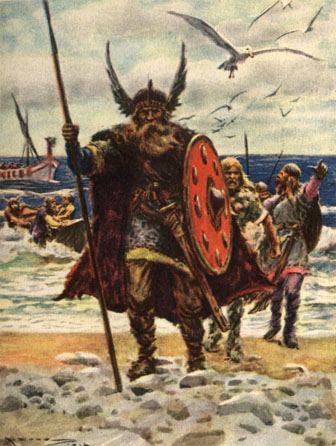
.
Copenhagen was a deadline without a plan.
Like Vikings, they rushed in. Too many issues, too many causes, too many delegates, too much reading, too many options and yet forced to deliver a global consensus solution in just 2 weeks!
Copenhagen’s approach ought to have been pragmatic. It needed to come down from the stratosphere in idealistic thinking to have focused on what could be the fastest means to offer the greatest reduction in greenhouse gases commencing in 2010.
Money is the obvious facilitator. The G11 response to the Global Financial Crisis ‘Mark I’ demonstrated the sheer scale of quick cash available from developed nations. Since developing nations need the cash, therein lies an obvious negotiating connector.
Try this scenario… rank countries on the basis of their aggregate carbon emissions and also carbon emissions per capita. The size of reduction responses and the amount of funding for carbon reduction programmes should be proportional on both bases. That is, the worst emitting developed nations pay more, and the worst emitting/deforesting developing nations get compensated more not to log.
Pay compensation to countries to stop deforestation is simply a matter of money and there is certainly enough of that around it seems. This should start by Christmas – calculate the forest area, calculate the compensation value, sign the agreement, developing countries contribute to a trust account, transfer the funds electronically to the host country of the forests, send in UN monitors to enforce the agreement to make sure no trees fall. If Copenhagen just did that, it would have achieve a significant inroad – 20% reduction in one year or something in that order.
News of the pledge by US based Climate Progress of US$1 billion over three years towards decreasing deforestation is an excellent outcome. The funding will go to developing countries that develop REDD (Reducing Emissions from Deforestation and Degradation) programs.
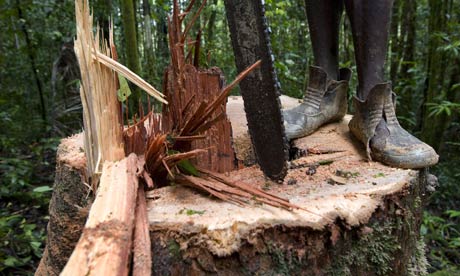
But horse trading in emissions is pure problem avoidance. Perhaps a less patriarchal culture may have helped too. Perhaps less Viking patriarchal culture and perhaps a more matriarchal approach to negotiation would have achieved better. The alpha male approach has clearly failed.
‘COP15’ was also a silly name. It just meant the 15th United Nations Climate Change Conference. Rather than the meaningless ‘COP15’ (‘Conference of Parties’ #15) , such a vital global forum series deserves a more accessible and meaningful name in order to better engage with ordinary folk.
Perhaps instead a better name should be ‘Greenhouse 2009’, then work towards ‘Greenhouse 2010’, ‘Greenhouse 2011’ – for each year, setting and achieving a distinct global reduction outcome by legal treaty. Such numbering and annual frequency would better convey the sense of urgency.
.
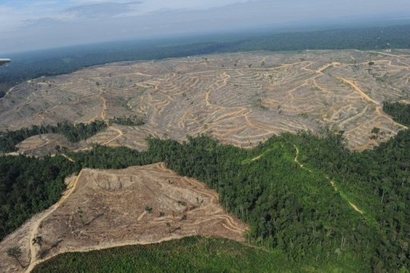 This is Malaysia
Don’t holiday in Malaysia. Don’t fly Malaysian Airlines.
This is Malaysia
Don’t holiday in Malaysia. Don’t fly Malaysian Airlines.
.
Friday, May 3rd, 2013
[This article was written as a letter by the Editor and first published in the Blue Mountains Gazette newspaper in print eight years ago on 20050202.
Back then, some of us realised the devastating scale of threat that the RTA Trucking Juggernaut posed for the Blue Mountains, notably a few older wiser folk did too. We attended token RTA Community Meetings which for Leura were then hosted by spin doctor Iain McLeod and RTA consultants.
But our vocal democratic concerns fell on deaf ears and crocodile smiles. In hindsight the ‘consultation’ was purely so that the RTA could record community attendance on paper as being ‘consultative’ and thus legally compliant before it bulldozed through our villages anyway. Leura was just one village of many.
Yet many affected locals not in the know, then belatedly started selling up and got pittance or went broke. This is a snapshot into tragic story of tyrannical bureaucracy bulldozing its power and trucking vested interest through a local community, as if this is not the Australia we know.
To follow in the coming years we attended RTA-come-RMS community meetings ahead of destruction of Katoomba, Medlow Bath, Lawson, Hazelbrook, Bullaburra and Mount Victoria.
Rebellious Blackheath looks set to be the last bastion of community resistance against the 4-laned trucking expressway juggernaut.]
.
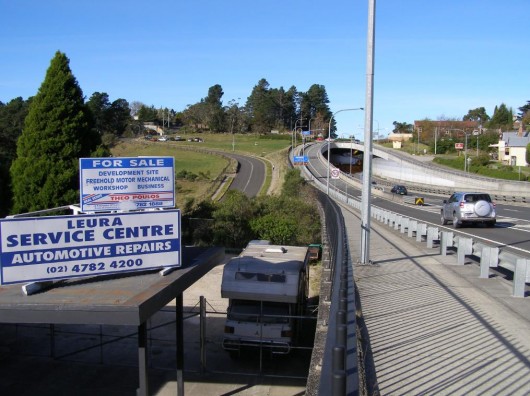 Back in 2005 this long established Leura Service Centre
protested with a sign here to the RTA expressway development, reading: Back in 2005 this long established Leura Service Centre
protested with a sign here to the RTA expressway development, reading:
‘We Are Not Moving’
But the RTA legions came, they lied to locals, then proceeded to engineer a massive new expressway at 4 metres above this premises,
until Leura Service Centre became out of site of its motoring trade.
[Photo by Editor, 20130503, Photo © ^Creative Commons]
.
Prompted by the protest sign of this highway business, as one passed by it on occasions along the highway, this sense of injustice hit a raw nerve. This inspired this Editor to write the following letter of solidarity to the local newspaper back in 2005.
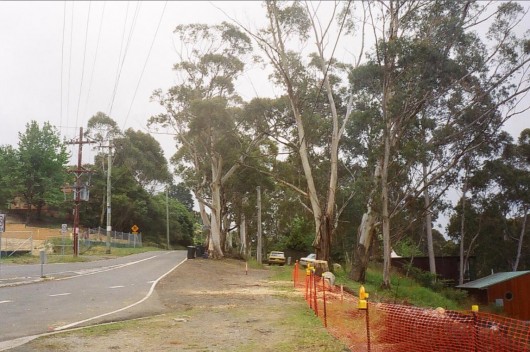 Pre- Juggernaut
Great Western Highway outside the Katoomba Hospital (left of photo) showing the stand of endemic Eucalyptus oreades
listed on Blue Mountains Significant Tree Register which has proven to be mean crap.
[Photo by Editor, 20061222, Photo © ^Creative Commons] Pre- Juggernaut
Great Western Highway outside the Katoomba Hospital (left of photo) showing the stand of endemic Eucalyptus oreades
listed on Blue Mountains Significant Tree Register which has proven to be mean crap.
[Photo by Editor, 20061222, Photo © ^Creative Commons]
.
‘We Are Not Moving’
.
<<Back when first coming up the Mountains, I reminisce a sense of arrival upon reaching Katoomba’s old highway sign: ‘Altitude 1017m’ and stirred by the stands of grey slender and bowed mountain ash, robust on the ridgetop. With Sydney far behind, I had arrived in the cooler upper Mountains; my escape and destination.
I have since learned these unusual bowed trees are ‘Eucalyptus oreades’, special to the upper Mountains. But these twenty odd ‘oreades’ just opposite Katoomba hospital are now being clear-felled by the RTA to widen the highway. Temporary fencing is up and the dozers are in. Within weeks another tangible remnant of Mountains natural-heritage will disappear. Sadly, the outcome of the little known ancient ridgetop spring, just below, will fall to the discretion of drainage contractors. This spring has for eons sustained a fern microclimate and fed Leura Cascades/Falls. How really precious is what’s downstream?
Sydneysiders have been ‘opening up the west’ since Cox made convicts force the western road across the ridgetop in 1815. Progress and populations beyond continue to demand a better, more efficient transit across our Mountains. Widening the ‘great’ Western Highway surely will dissipate weekend bumper traffic and allow truck drivers to enjoy fewer gear changes. But expedient are the defiant roadside businesses, heritage and residents’ amenity. With the roadside planting tokenly native, disregarding journey experiences to become the same as anywhere else. NSW’s population absorption policy is not ours, yet Sydney’s metropolis officially extends to Mount Victoria. What transit efficiencies do these highwaymen plan to force through Mt Vic…perhaps our last built-heritage bastion?
Progress through the Blue Mountains, of all places, deserves to be tempered by a proactive rigorous heritage conservation strategy. As our unique built, natural and cultural heritage of the Mountains piece by piece disappears, so too does its magic and the Mountains appeal as a destination, sanctuary and home.>>
.
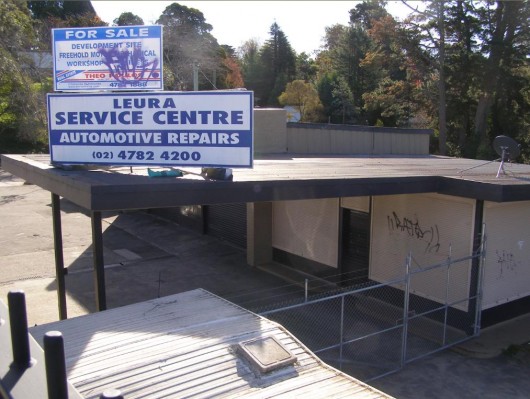 Established Blue Mountains highway business bullied out of business by the RTA in 2005
[Photo by Editor, 20130503, Photo © ^Creative Commons] Established Blue Mountains highway business bullied out of business by the RTA in 2005
[Photo by Editor, 20130503, Photo © ^Creative Commons]
.
 The then head bully, RTA Director Les Wielinga The then head bully, RTA Director Les Wielinga
.
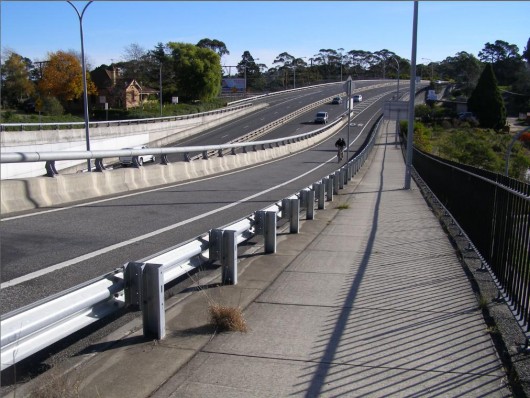 The 4-laned Trucking Expressway at Leura (complete with dodgy cycle lane)
The RTA-come-RMS Concrete Destiny for the remnant Blue Mountains villages
of Bullaburra, Mount Victoria and Blackheath.
Despite what the Bullaburra Progress Association naively believed,
no community is more special than Linehaul Trucking!
[Photo by Editor, 20130503, Photo © ^Creative Commons] The 4-laned Trucking Expressway at Leura (complete with dodgy cycle lane)
The RTA-come-RMS Concrete Destiny for the remnant Blue Mountains villages
of Bullaburra, Mount Victoria and Blackheath.
Despite what the Bullaburra Progress Association naively believed,
no community is more special than Linehaul Trucking!
[Photo by Editor, 20130503, Photo © ^Creative Commons]
.
.
Saturday, April 6th, 2013
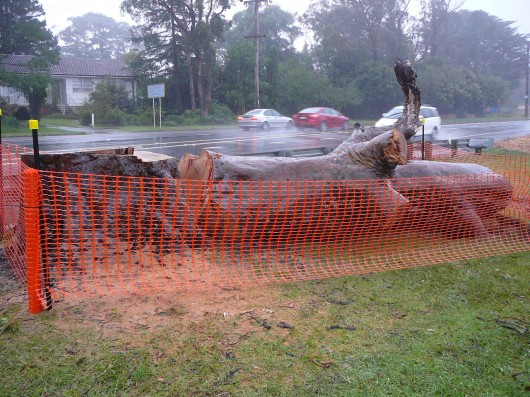 The trunk of a healthy 300+ year old Angophora lies beside the highway in Bullaburra
Blue Mountains, New South Wales, Australia
[Photo by our investigator, 20130403, Photo © ^Creative Commons] The trunk of a healthy 300+ year old Angophora lies beside the highway in Bullaburra
Blue Mountains, New South Wales, Australia
[Photo by our investigator, 20130403, Photo © ^Creative Commons]
.
Government destruction of Bullaburra has begun. Last Monday, April Fools Day 2013, they came and killed Bullaburra’s magificent Angophora to make way for a trucking expressway through the village. But who are the fools who destroy our native heritage?
To many perhaps this is just another tree. Some people value trees and ecology. Others have deep value for wildlife and other animals, especially their pets. Many people value where they live and grow very attached to where they live for reasons that can seem difficult for others to appreciate. But it is the existence rights of species that humans ignore besides their own self-serving interests. Male Baby Boomers remain the most extreme in their self-righteousness, and those in government prescribe utilitarian dictates over the rights of the few.
Elie Wiesel, novelist, political activist, and Humanities Professor at Boston University, has said that the opposite of love is not hate, it’s indifference. The opposite of beauty is not ugliness, it’s indifference. The opposite of faith is not heresy, it’s indifference. And the opposite of life is not death, but indifference between life and death.
.
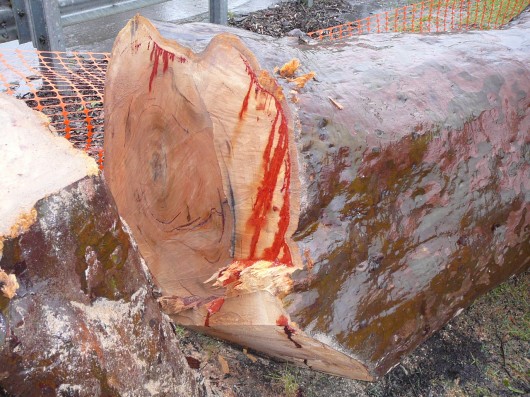 Witnessing an old friend being slaughtered
[Photo by our investigator, 20130403, Photo © ^Creative Commons] Witnessing an old friend being slaughtered
[Photo by our investigator, 20130403, Photo © ^Creative Commons]
.
A native tree that once was part of an Angophora (Sydney Redgum) forest, existed way back when the three explorers Lawson, Wenthworth and Blaxland crossed the Blue Mountains in 1813. They would have passed right past this tree. Two years later road builder William Cox similarly would have laid his rough track, and in 1836 Major Mitchell upgrading the road too would have passed by this tree. For nearly two centuries travellers have passed by this tree, most probably not even giving it a glance. Now it is gone and the opportunity to respect and appreciate this remnant of natural heritage has gone with it.
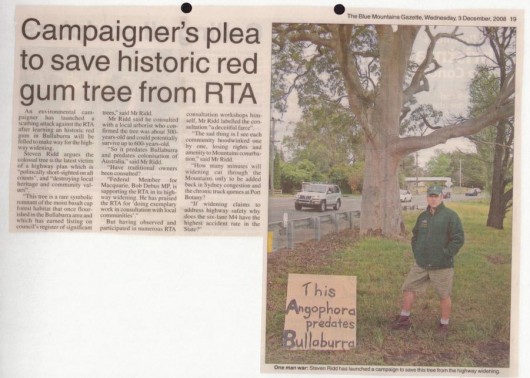 We tried to save you
Campaign to Save Bullaburra’s 300 year old Angophora back in 2008
(Blue Mountains Gazette, 20081203) We tried to save you
Campaign to Save Bullaburra’s 300 year old Angophora back in 2008
(Blue Mountains Gazette, 20081203)
.
Last January, spiteful people set fire to two Hermmansburg ghost gums made famous in Albert Namatjira’s landscape paintings. In 2006, Barcaldine’s famous ghost gum, ‘the tree of knowledge’ was poisoned. Just last week an old gum tree in the Rylstone public school was poisoned. Human hate for native trees has pervaded Australian colonising society since Cook landed at Camp Cove and chopped down trees for firewood.
.
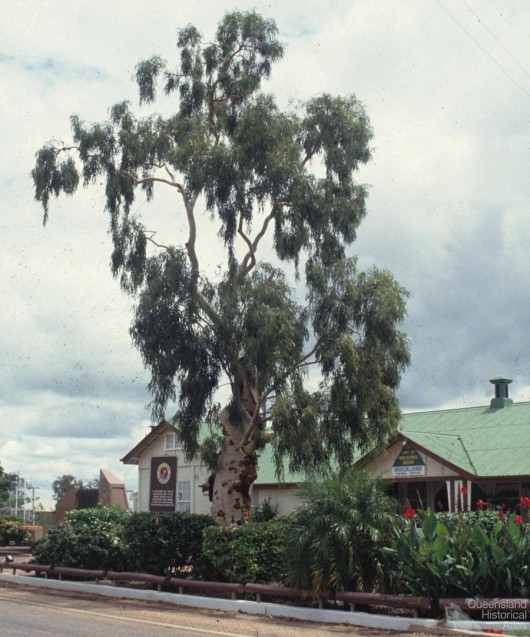 Tree of Knowledge, Barcaldine, Queensland
As it used to be, before it was poisioned.
[Source: Queensland Historical Atlas, 1991,
^http://www.qhatlas.com.au/photograph/tree-knowledge-barcaldine-1991] Tree of Knowledge, Barcaldine, Queensland
As it used to be, before it was poisioned.
[Source: Queensland Historical Atlas, 1991,
^http://www.qhatlas.com.au/photograph/tree-knowledge-barcaldine-1991]
.
A local arborist with expertise in native trees of the Blue Mountains including Angophoras, estimated in 2007 that the Bullaburra Angophora to have been over 300 years old. It was still healthy and still growing as confirmed by the solid core of the severed trunk.
Now it lies like a dead harpooned whale like roadkill beside the highway, where it has stood all those decades.
.
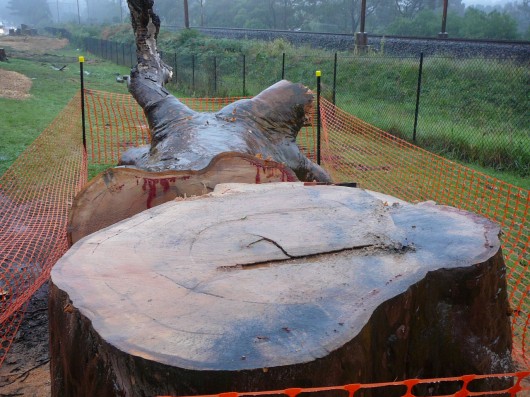 A dendrochronology of more than 300 annual growth rings.
The tree was healthy to the core. It was not rotting. It was not diseased.
It was just in the way of someone’s trucking interpretation of ‘progress’.
[Photo by our investigator, 20130403, Photo © ^Creative Commons] A dendrochronology of more than 300 annual growth rings.
The tree was healthy to the core. It was not rotting. It was not diseased.
It was just in the way of someone’s trucking interpretation of ‘progress’.
[Photo by our investigator, 20130403, Photo © ^Creative Commons]
.
Significant Tree #29
.
This Angophora was recognised as a ‘Significant Tree‘ on the local Blue Mountains Council’s Significant Tree Register back on 17th July 1985 and formally adopted on 21st June 1988, at the time of Australia’s Bicentennary.
No opposition against killing the tree was communicated by the Blue Mountains Council to the RTA-come-RMS. Indeed, this is one of many such ‘significant trees’ that have been killed for development convenience in recent years. Clearly, the Blue Mountains Council’s Significant Tree Register has become disingenuous and lying greenwash.
.
.
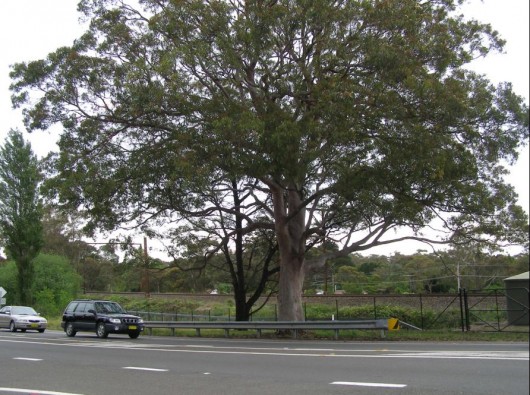 Bullaburra’s Angophora, in memoriam Bullaburra’s Angophora, in memoriam
Registered Significant Tree #: 29
Botanical Name: Angophora costata (Smooth Barked Apple, Red Gum)
Location: Great Western Highway Bullaburra, Opp. Lot 173, DP13407
[Photo by Editor, 20071028, Photo © ^Creative Commons]
.
Trucking Expressway
.
The death of the Angophora is the begining of the end of Bullaburra. The highway village is set to become a siding for four-laned trucking expressway so that B-double trucks can rumble 24/7 through Blue Mountains towns and villages, nudging 90kph on cruise control.
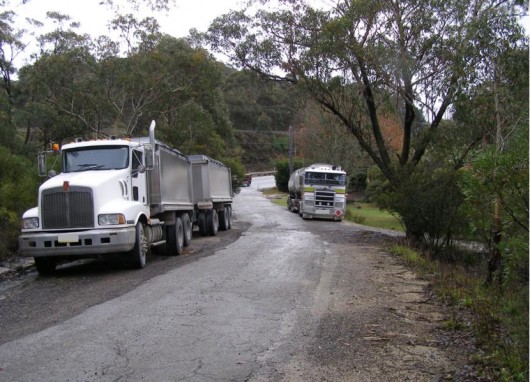 Bigger Trucks demanding bigger roads
[Photo by Editor, 20090531, Photo © ^Creative Commons] Bigger Trucks demanding bigger roads
[Photo by Editor, 20090531, Photo © ^Creative Commons]
.
The rural amenity of this highway village is to be lobotomised into a mono-design urban landscape taking on the same monotonous blandness as any other expressway in the country. The government euphemises this as:
.
“to achieve greater consistency in the design of the Blue Mountains area to achieve a simple and unified design of the highway and its elements.”
.
The fundamental basis for the government’s conversion of this regional highway into a national trucking expressway route is simply “to improve travel times” for trucks, so that more and larger trucks are encouraged to use the route.
The Bullaburrra section is to cost taxpayers $80 million and will see 3.6 hectares of native bushland destroyed on the basis that the vegetation “is already dissected and fragmented“. So it seems that moral relativism allows for wedge development just like a little bit of corruption doesn’t hurt anyone.
But as if the twisted morality isn’t bad enough. It is the greenwashing that really twists the knife in. The RTA-come-RMS in its Review of Environmental Effects maintains that the expressway development aims:
“to protect the natural systems and ecology of the corridor”
..
[Source: ‘The Great Western Highway Upgrade – Bullaburra East, Review of Environmental Effects’, Vol.2, July 2009, Roads and Traffic Authority, New South Wales Government, p.2.]
.
However, the expressway development will simply result in the heart of rural Bullaburra being ripped out and the amenity reduced to a trucking siding adopting a benale concrete landscape akin to the bland urban character of an upper Blaxland, and mirroring what has happened to nearby lobotomised Lawson.
.
“It’s just really tragic after all the horrors of the last 1,000 years we can’t leave behind something as primitive as government sponsored execution.”
~ Wisconsin Senator Russ Feingold, when introducing a bill that would end the death penalty on the Federal level.
.
Progress of Hate
.
Under Australia’s Federal Auslink Policy the national freight thinking is road-centric and all about replacing real trains with road trains. Behind this trucking expressway scheme is a powerful and influential trucking lobby group who donate generously to the political parties that control the New South Wales Government, and various politicians including retired Blue Mountains MP Bob Debus, who has long been a driver of this trucking expressway.
The New South Wales Government department behind this scheme is the RTA-come-RMS (Roads and Maritime Services). In 2007, the then General Manager – Environmental Branch, Ms Erica Adamson, claimed that to retain the Angophora consequential loss of tree roots and pruning would instigate the decline of the tree. “For road construction and safety reasons the tree will have to be removed…to maintain sight lines (for speeding trucks).”
“It’s called progress” they say. For the Blue Mountains it is being inflicted at any cost – economic, social, environmental.
The idea of ‘progress‘ is an economic one that was borne out of Western 18th Century hard-nosed Industrial Revolution and perhaps extending back to the 16th Century Enlightenment of Europe and perhaps even back to when the Iron Age triumphed so aggressively and effectively over the Bronze Age.
Perhaps progress remains subjective only with the progressor who doggedly in his pursuit rough shods over others in the process. Perhaps the idea of progress is a myth. Is the human condition better off as a result? Are we advancing as a society by rough shodding over others and over what is left of Ecology and Nature? The philosophy of ‘^Deep Ecology‘ posits otherwise.
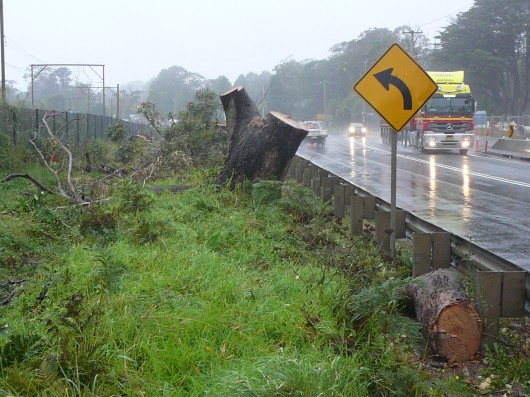 Progress of Hate
[Photo by our investigator, 20130403, Photo © ^Creative Commons] Progress of Hate
[Photo by our investigator, 20130403, Photo © ^Creative Commons]
.
“Progress means getting nearer to the place you want to be. And if you have taken a wrong turning, then to go forward does not get you any nearer. If you are on the wrong road, progress means doing an about-turn and walking back to the right road; and in that case the man who turns back soonest is the most progressive man.”
~ C.S. Lewis, Mere Christianity
.
Related reading on this website:
.
[1] >Threats from Road Making – articles
.
[2] >Bushphobia – a case of deluded convenience
.
Tags: Blue Mountains, Blue Mountains Council, BMCC, Bullaburra, Bullaburra Angophora, Bullaburra's Angophora, ghost gums, Great Western Highway, greenwash, RMS, Roads and Maritime Services, RTA, RTA-come-RMS, Significant Tree, Significant Tree Register, Tree of Knowledge, trucking expressway
Posted in Blue Mountains (AU), Threats from Greenwashing, Threats from Road Making | 1 Comment »
Add this post to Del.icio.us - Digg
Sunday, March 31st, 2013
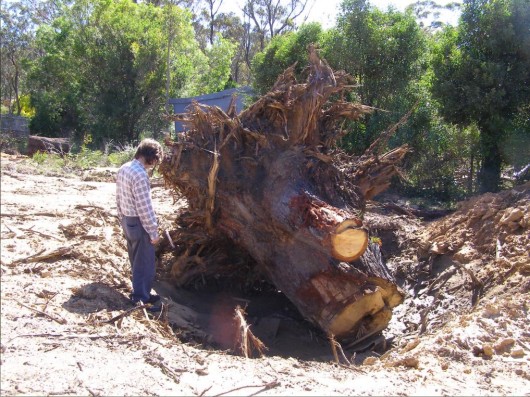 A hundred year old native Eucalypt killed for housing development
Wellington Road Katoomba, Blue Mountains
[Photo by Editor, 20130307, click image to enlarge, Photo © ^Creative Commons] A hundred year old native Eucalypt killed for housing development
Wellington Road Katoomba, Blue Mountains
[Photo by Editor, 20130307, click image to enlarge, Photo © ^Creative Commons]
.
Month by month, year on year, the native vegetation of the Blue Mountains is steadily disappearing lot by lot, hectare by hectare, for private housing development profit.
A native bushland site along Wellington Road on the bush fringe of Katoomba has been recently sold off for private profit, then bulldozed and trees uprooted ready for housing construction. Like so many such sites, once the house is built, it soon goes on the market for sale and profit.
Typically, it is not owner-occupiers buying up the bush, but property developers for quick sale and profit. Cummulatively, much of fringe Blue Mountains bushland is being flogged for profit. Cheap bush blocks are bought, bushland habitat is destroyed and private profit is made at the expense of cheapened ecology.
And real estate agents are in on the private profit making bandwagon.
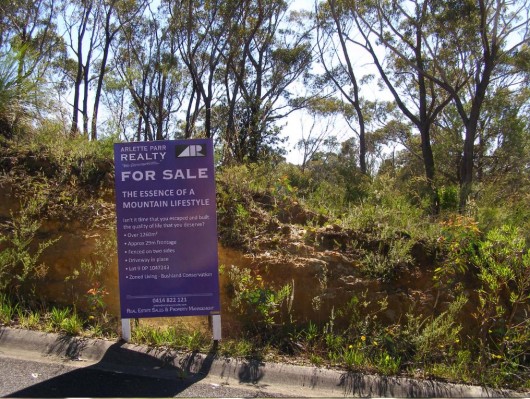 Katoomba fringe bushland flogged by real estate agents
Oxymoronic zoning: ‘Living – Bushland Conservation’
[Photo by Editor, 20130307, click image to enlarge, Photo © ^Creative Commons] Katoomba fringe bushland flogged by real estate agents
Oxymoronic zoning: ‘Living – Bushland Conservation’
[Photo by Editor, 20130307, click image to enlarge, Photo © ^Creative Commons]
.
On this particular site, grows a threatened species of native flora, Needle Geebung (Persoonia acerosa), which is endemic to this region of the Blue Mountains – that is, outside this region, the species grows naturally nowhere else on the planet. It is a protected species under the Threatened Species Conservation Act 1995 (New South Wales).
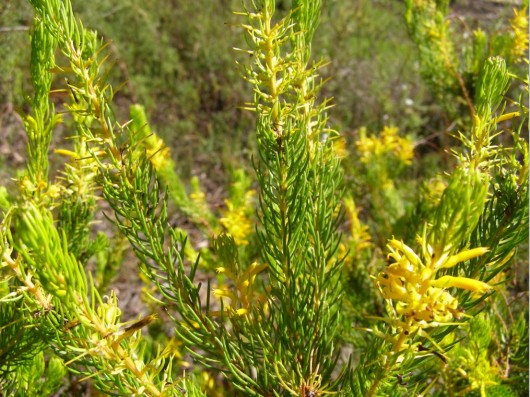 Blue Mountains Needle Geebung (Persoonia acerosa)
[Photo by Editor, 20130307, click image to enlarge, Photo © ^Creative Commons]
Listed as vulnerable to extinction in Schedule 2 ‘Vulnerable species and ecological communities‘
within the Threatened Species Conservation Act 1995 (New South Wales).
[Source: NSW Government, ^http://www.environment.nsw.gov.au/threatenedspecies/whatists.htm] Blue Mountains Needle Geebung (Persoonia acerosa)
[Photo by Editor, 20130307, click image to enlarge, Photo © ^Creative Commons]
Listed as vulnerable to extinction in Schedule 2 ‘Vulnerable species and ecological communities‘
within the Threatened Species Conservation Act 1995 (New South Wales).
[Source: NSW Government, ^http://www.environment.nsw.gov.au/threatenedspecies/whatists.htm]
.
The Needle Geebung is a plant species within the Proteaceae family of flowering plants. The Needle Geebung is a small, erect to spreading shrub 1 – 2 m tall. Its bright green, pine-like foliage is very distinctive. The small, needle-like leaves are channelled on the upper surface. Flower clusters are produced along leafy shoots, not at the branch tips, as in related species. The yellow tubular flowers are up to 1 cm long and most frequently appear in summer. Fruits are pear-shaped, yellowish-green with brownish-red markings, to 14 mm long and 10 mm in diameter.
.
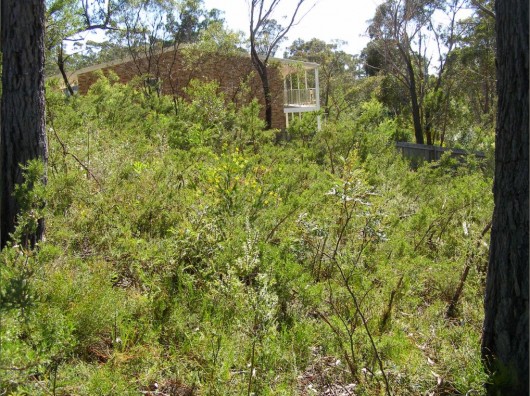 Needle Geebung in its natural setting (yellow flowers in centre of image)
[Photo by Editor, 20130307, click image to enlarge, Photo © ^Creative Commons] Needle Geebung in its natural setting (yellow flowers in centre of image)
[Photo by Editor, 20130307, click image to enlarge, Photo © ^Creative Commons]
.
The Needle Geebung occurs in dry sclerophyll forest, scrubby low-woodland and heath on low fertility soils. Plants are likely to be killed by fire and recruitment is solely from seed. This species seems to benefit from the reduced competition and increased light available on disturbance margins including roadsides.
The threatened status of this species was last assessed in September 2012, but as each month passes and more fringe bushland is flogged off for housing development, the existence of the species is further reduced.
In New South Wales, ‘threatened‘ species, populations and ecological communities are those respectivelyconsidered by the New South Wales Scientific Committee to be at risk of extinction in the immediate to medium-term future in New South Wales, and are listed under Threatened Species Conservation Act 1995, Schedules 1, 1A and 2.
[Source: New South Wales Government, ^http://www.environment.nsw.gov.au/threatenedspecies/whatists.htm]
.
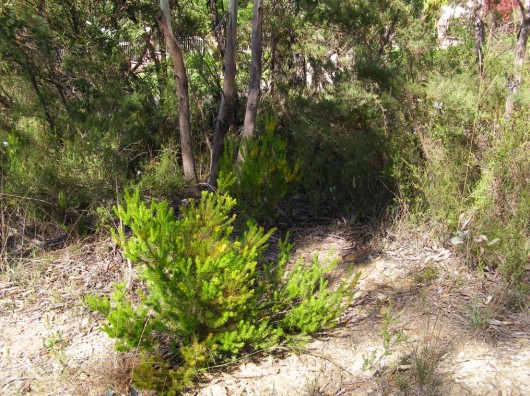 Needle Geebung isolated by the property developer
[Photo by Editor, 20130307, click image to enlarge, Photo © ^Creative Commons] Needle Geebung isolated by the property developer
[Photo by Editor, 20130307, click image to enlarge, Photo © ^Creative Commons]
.
The Needle Geebung has been recorded only on the central coast and in the Blue Mountains, from Mt Tomah in the north to as far south as Hill Top where it is now believed to be extinct. It is mainly concentrated in the Katoomba, Wentworth Falls and Springwood area of the mid to upper central Blue Mountains. The following map is only indicative of where the species grows naturally, but due to government withdrawal of environmental funding, species surveys are not conducted, let alone implementation of Species Recovery Plans or Threat Abatement Plans.
 Needle Geebung – indicative distribution map
[Source: New South Wales Government,
^http://www.environment.nsw.gov.au/threatenedspeciesapp/profile.aspx?id=10591] Needle Geebung – indicative distribution map
[Source: New South Wales Government,
^http://www.environment.nsw.gov.au/threatenedspeciesapp/profile.aspx?id=10591]
.
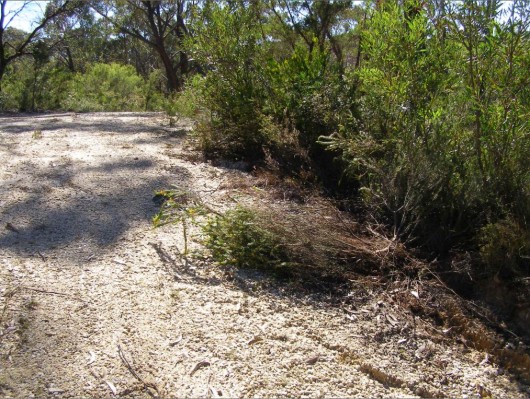 Property developer has killed a Needle Geebung on the site
[Photo by Editor, 20130307, click image to enlarge, Photo © ^Creative Commons] Property developer has killed a Needle Geebung on the site
[Photo by Editor, 20130307, click image to enlarge, Photo © ^Creative Commons]
.
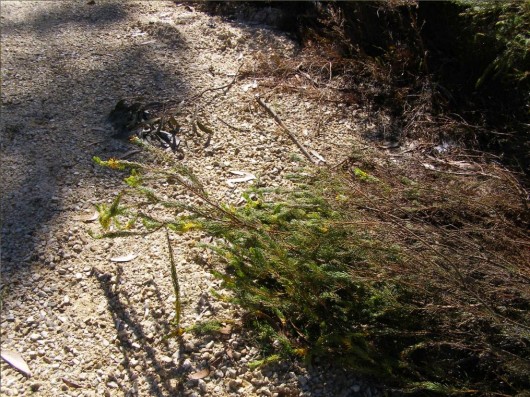 Close up of the same killed plant
[Photo by Editor, 20130307, click image to enlarge, Photo © ^Creative Commons] Close up of the same killed plant
[Photo by Editor, 20130307, click image to enlarge, Photo © ^Creative Commons]
.
The damage and killing of this particular plant and others on the site along Wellington Road was reported to the local statutory authority, the Blue Mountains Council on Friday 1st March 2013, following the discovery by local residents of the damage to this protected species. Council’s Customer Service Request reference is #174709.
Despite the previously undisturbed natural bushland on the site and the prolific concentration of Needle Geebung plants, the Council approved housing construction on the site about two weeks prior on 19 February 2013.
Such approval and the subsequent vegetation removal on the site and damage and killing of this species to the would seem to be a direct breach of the Threatened Species Conservatioin Act as it relates to protecting the Needle Geebung from harm. Under Section 91, Clause 1, the Director-General may grant a licence authorising a person to take action likely to result in one or more of the following:
.
(a) harm to any animal that is of, or is part of, a threatened species, population or ecological community,
(b) the picking of any plant that is of, or is part of, a threatened species, population or ecological community,
(c) damage to critical habitat,
(d) damage to habitat of a threatened species, population or ecological community.
.
Such harm is deemed and offence under the Act and can attract up to 200 penalty units or about $22,000 fine under Section 141E of the Act.
However, since reporting the incident, no action has been taken by Council and no fine imposed. The expression ‘paying lip service‘ comes to mine.
.
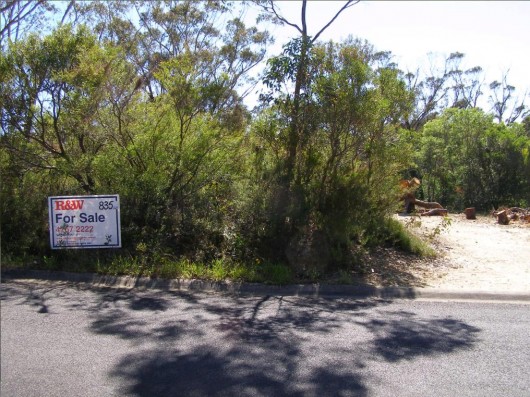 Real estate agents flogging Blue Mountains bush
[Photo by Editor, 20130307, click image to enlarge, Photo © ^Creative Commons] Real estate agents flogging Blue Mountains bush
[Photo by Editor, 20130307, click image to enlarge, Photo © ^Creative Commons]
.
Australia is estimated to be home to more than 500,000 animal and plant species. Many of which are found nowhere else in the world. Australia is faced with unprecedented loss of biodiversity. Over the last two hundred years, more than 100 species of animals and plants have become extinct. More mammals have died out in Australia, than in any other continent.
<<According to the International Union for Conservation of Nature and Natural Resources Red List of Threatened Species, Australia now has the highest rate of species extinction of any developed nation. Almost one in five mammal species are facing extinction and there are over 800 plants and animals which are listed as threatened.>>
[Source: 6.1 Threatened species and ecological communities, ^http://www.edo.org.au/edonsw/site/factsh/fs06_1.php]
.
The main causes of species’ decline include habitat destruction and degradation, impacts of introduced invasive species, pollution and disease. In New South Wales, there are more than 850 animal and plant species at risk of extinction – including the Koala, Humpback Whale and Wollemi Pine. Our ecosystems are also at risk. Only a small proportion of forests, woodlands and grasslands remain. The status of many thousands of species is unknown.
.
Under New South Wales Threatened Species Conservation Act 1995, Part 1, Section 3, the objects of the Act are:
.
(a) to conserve biological diversity and promote ecologically sustainable development, and
(b) to prevent the extinction and promote the recovery of threatened species, populations and ecological communities, and
(c) to protect the critical habitat of those threatened species, populations and ecological communities that are endangered, and
(d) to eliminate or manage certain processes that threaten the survival or evolutionary development of threatened species, populations and ecological communities, and
(e) to ensure that the impact of any action affecting threatened species, populations and ecological communities is properly assessed, and
(f) to encourage the conservation of threatened species, populations and ecological communities by the adoption of measures involving co-operative management.
.
[Source: New South Wales Government, ^http://www.legislation.nsw.gov.au/viewtop/inforce/act+101+1995+fn+0+N]
But unless diligent monitoring and enforcement supports the legistlation, such protection is effectively ‘paying lip service‘.
Here is the official lip service of the Blue Mountains Council as it relates to protecting Threatened Species in the Blue Mountains.
<<The Blue Mountains Local Government Area contains approximately 10% of the listed threatened species in New South Wales.
The high percentage is a function of the high biodiversity of the area, the large number of endemic species and the ongoing impacts of urban development such as land clearing, urban runoff, sedimentation, habitat disturbance, and weed invasion. Blue Mountains Council is committed to reversing this situation through sensitive urban planning, a strong environmental program, and targeted Environment Levy funded projects and by fostering community involvement in biodiversity conservation through the Bushcare, Landcare, Swampcare and Bush backyards programs.
Blue Mountains City Council employs a Biodiversity Conservation Officer who co-ordinates an integrated threatened species recovery team which focuses on threatened species which are endemic (ie only occurring in the Blue Mountains) or species that have a stronghold in the Blue Mountains including the Blue Mountains Water Skink, the Giant Dragonfly, the Dwarf Mountain Pine, Epacris hamiltonii, Leionema lachnaeoides and Eucalyptus copulans. The Biodiversity Conservation Officer is also responsible for raising awareness of threatened species and endangered ecological communities (EECs) such as Blue Mountains Swamp and Shale Based EECs in the Blue Mountains and fostering community involvement in their recovery.
How many threatened species occur in the Blue Mountains (as at June 2009)?
Vulnerable:
12 birds
14 mammals
3 amphibians
28 Plants (including the Needle Geebung)
1 Reptile
Endangered:
20 Plants
2 birds
1 amphibian
1 insect
2 mammals
2 reptiles
8 ecological communities
.
‘Vulnerable‘: a native species is considered ‘vulnerable’ if a species is likely to become endangered unless the threats to its survival cease to operate.
.
‘Endangered‘: a species is considered ‘endangered’ if it is in danger of extinction unless the threats to its survival cease to operate.
.
‘Presumed extinct‘: a species that has not been seen for more than 50 years despite thorough searching, is presumed extinct. Native species, populations and communities, which are presumed extinct, endangered or vulnerable in NSW, are all considered ‘threatened’.>>
.
[Source: Blue Mountains Council website, ^http://www.bmcc.nsw.gov.au/sustainableliving/environmentalinformation/threatenedspecies/]
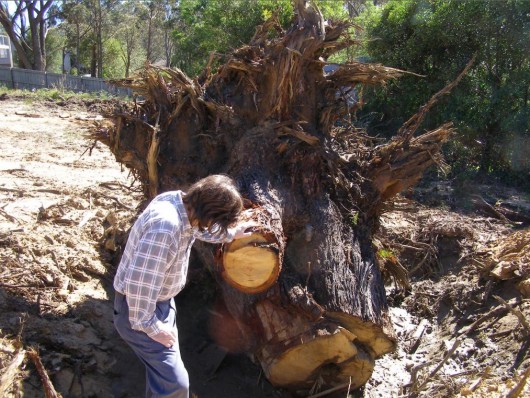 Mature Eucalypt 100+ years old killed for housing
[Photo by Editor, 20130307, click image to enlarge, Photo © ^Creative Commons] Mature Eucalypt 100+ years old killed for housing
[Photo by Editor, 20130307, click image to enlarge, Photo © ^Creative Commons]
.
.
A Lesson for Blue Mountains Greenwashing
.
2009: ‘Manager Fined for Environmental Offence’
.
<<In a recent case in NSW, the Land and Environment Court found the Director of Infrastructure at Port Macquarie Hastings Council guilty of an offence under the National Parks and Wildlife Act 1974 (Garrett v Freeman (No 5) [2009]). This is the first time that a senior council employee has been found guilty of an offence conducted while carrying out their normal work. The prosecution also shows that the Authorities are becoming more willing to target individual employees, rather than only their company or organisation.
The prosecution found that the Director had committed an offence under s 118D(1) of the National Parks and Wildlife Act 1974 (NPW Act). This section of the Act states that it is an offence to cause damage to the habitat of threatened species or endangered populations or endangered ecological communities. The maximum penalty for an offence against Section 118D(1) of the NPW Act is $110,000 or imprisonment for one year, or both. The recent court sitting, in which the penalty was determined, concluded with the Director being fined $57,000, as well as being directed to pay the prosecutor’s costs of $167,500.
As well as prosecuting the Director of Infrastructure, the Council was ordered to pay $45,500 plus $114,00 in prosecutor’s costs for an offence under the NPW Act and $35,000 and prosecutor’s costs of $80,000 for an offence under the Fisheries Management Act 1994 (NSW).
.
What lead to the decision?
.
The prosecution was made after the Director instructed access roads to be constructed within a wetlands, which was an area identified as having acid sulphate soils. The construction of the roads resulted in the disturbance of the habitats of two threatened species; the Grass Owl (Tyto capensis) and the Eastern Chestnut Mouse (Pseudomys gracilicaudatus).
The construction of the roads was found to be an activity within the meaning of Part 5 of the Environmental Planning and Assessment Act 1979 (EP&A Act), which requires that the environmental impact of an activity be considered prior to the activity being undertaken. The impact of the activity must be considered by the determining authority in approving the activity.
The Director did not obtain any approval for the construction of the access roads, and hence no determining authority was notified to assess the environmental impact of the activity. There was conflicting evidence surrounding whether the Director was aware that threatened species were present at the site, however it was concluded that he ought to have reasonably been aware, as a number of comprehensive studies to which he had access had identified the threatened species. The Director believed that he had conducted a Review of Environmental Factors for the site, which determined that there was no impact to threatened species. However the form of the Review did not constitute an assessment of the project’s impacts as required by the EP&A Act 1979, including the impact on the threatened species of the disturbance and destruction of their habitat.
The construction of the roads was found likely to significantly affect the environment or threatened species within the meaning the EP&A Act 1979. By undertaking the construction without obtaining an Environmental Impact Statement (EIS) or Species Impact Statement (SIS), council failed to comply with the requirements of the Act.
.
Key Factors
.
Evidence that lead to prosecution of the defendant included:
.
- The Director had actual knowledge that the roads were constructed
- The Director knew that the wetlands were habitat for the Grass Owl and the Eastern Chestnut Mouse, listed as threatened species
- The Director had actual knowledge, imputed knowledge, and/or constructive knowledge that the construction of the roads would damage threatened species habitat, specifically the Grass Owl and the Eastern Chestnut Mouse
- The Director failed to prove that he did not have knowledge that the council failed to comply with the EPA Act 1979
- The NPW Act requires the defendant to satisfy the Court that the principal offence was committed without his knowledge. The Director was unable to prove this to the satisfaction of the court. The case also found that there was ample evidence that the Council knew that the land was habitat of the two threatened species.
.
Lesson
.
… the precautionary principle always applies. If you suspect potential environmental impacts, you have a duty to ensure they are considered, whether there is sufficient information available about the impact or not. Ignoring the precautionary principle has been used as evidence for prosecutors in numerous past environmental litigation cases.>>
.
[Source: Noel Howard and Associates (risk management consultants), ^ http://www.noel-arnold.com.au/content/index.php?mact=News,cntnt01,detail,0&cntnt01articleid=197&cntnt01origid=69&cntnt01returnid=69]
.
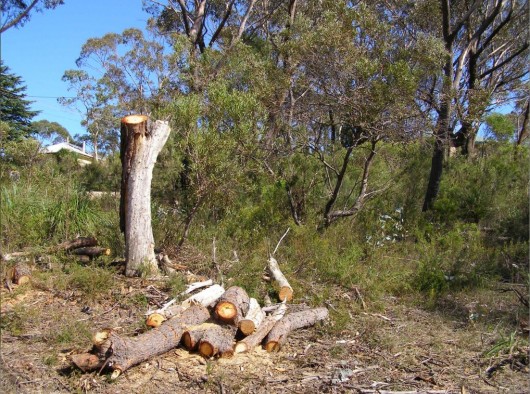 Blue Mountains Council – caring for country?
[Photo by Editor, 20130307, click image to enlarge, Photo © ^Creative Commons] Blue Mountains Council – caring for country?
[Photo by Editor, 20130307, click image to enlarge, Photo © ^Creative Commons]
.
.
Footnote
.
Response from Council..
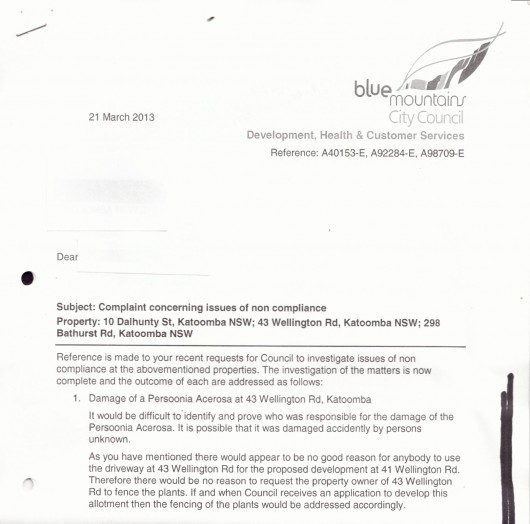 This is typical bureaucratic greenwashing to which Blue Mountains Council has developed into an artform to avoid its environmental responsibilty and to fob off any resident who dares to take an active interest in environmental protection. Some residents who complain about environmental pollution and damage too often are black listed, and are even cast with a punitive ‘Plan of Management’. This is typical bureaucratic greenwashing to which Blue Mountains Council has developed into an artform to avoid its environmental responsibilty and to fob off any resident who dares to take an active interest in environmental protection. Some residents who complain about environmental pollution and damage too often are black listed, and are even cast with a punitive ‘Plan of Management’.
The response has the same nonchalant disinterest and excuse that could well have instead read as follows:
‘Look resident 123456,
Frankly, this is again in our too hard basket and you should really stop contacting us and crawl back under your bush and leave us to do other things like write environmental reports, which we do well.
Yes, we sort of care about threatened species – our glossy brochures, reports, website and symposiums say so, and we believe them, but we don’t have time to get out there and actually check. We don’t have the resources.
Yeah, we have environmental protection by-laws, but we’re busy and anyway people need homes built. If we put too much environmental pressure on them their developers challenge us in the Land and Environment Court and usually win because we have weak laws and shit lawyers who love creaming ratepayers money. And so we don’t have the resources.
Since we can’t prove who killed the Persoonia plants, we put this matter in the category of ‘known unknowns’. We see that no-one else but the developer and his contractors had reason to use the driveway, so we see no reason for fencing out others since only the developer and his contractors would be damaging the Persoonia.
When they have finally cleared the block of all vegetation, and when the developer then thinks it is safe to lodge a development application to build with all plants removed, only then the fencing of the plants would be addressed accordingly.. if we get resource funding.
Signed Yours,
Pompous Arse (acting)
Development Monitoring Team (every second Tuesday of the third month*)
Development, Health & Custoner Services (on a completely separate floor to Council’s City & Community Outcomes Directorate which funnily enough includes environmental protection)
Please consider the Environment before photocopying this printed letter.
..the city within a world heritage national park
Blue Mountains Council (thinking it is a big city)
.
* Subject to staff availability and yes, resources.
.
Tags: Blue Mountains, caring for country, housing development, Living - Bushland Conservation, Mature Eucalypt killed, Needle Geebung, paying lip service, Persoonia acerosa, real estate land sales, Threatened Species Conservation Act, Vulnerable species and ecological communities, Wellington Road Katoomba
Posted in Blue Mountains (AU), Threats from Development, Threats from Greenwashing, Threats from Weak Environmental Laws | No Comments »
Add this post to Del.icio.us - Digg
|
|
 Sydney Water reservoir half-painted
Narrow Neck Road, Katoomba
[Photo by Editor, 20131213, Photo © under ^Creative Commons]
Sydney Water reservoir half-painted
Narrow Neck Road, Katoomba
[Photo by Editor, 20131213, Photo © under ^Creative Commons]
 Blue Mountains drinking water tank with chlorine salt stains
Mineral salt efflorescence
Narrow Neck Road, Katoomba
[Photo by Editor, 20130507, Photo © under ^Creative Commons]
Blue Mountains drinking water tank with chlorine salt stains
Mineral salt efflorescence
Narrow Neck Road, Katoomba
[Photo by Editor, 20130507, Photo © under ^Creative Commons]






















































